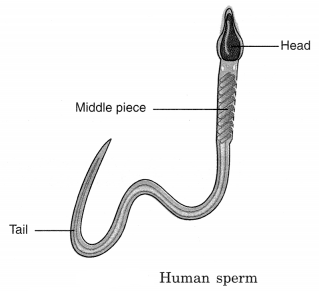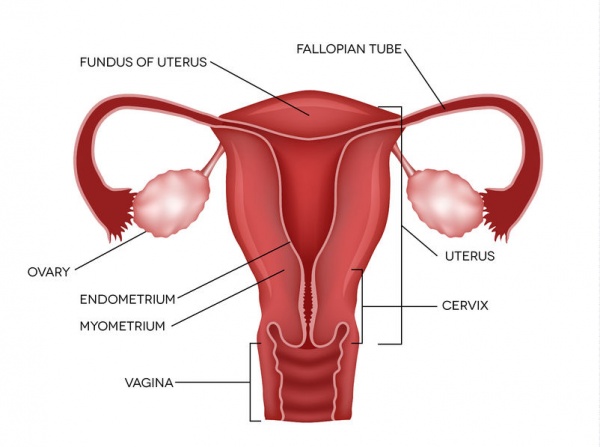Reproduction: It is one of the important life processes, which ensures the continuation of similar kinds of individuals (species) generation after generation.
Modes of Reproduction: There are two modes by which animals reproduce. These are
- Sexual reproduction and
- Asexual reproduction.
Sexual Reproduction
Male Reproductive Organs: Male reproductive organs are a pair of testes, sperm ducts, and a penis.

Sperms: The testes produce the male gametes called sperms.

Female Reproductive Organs: The female reproductive organs are a pair of ovaries, oviducts (fallopian tubes) and the uterus.

In human beings, a single matured egg is released into the oviduct by one of the ovaries every month.
Uterus is the part of the female reproductive system where the development of the embryo takes place.
Both sperm and ova are single-celled structure.
The fusion of the ovum and the sperm is called fertilisation.
Fertilisation which takes place inside the female body is called internal fertilisation.
Fertilisation which takes place outside the body of the female is called external fertilisation.
During fertilisation, the nuclei of the sperm (n) and the egg in) are fused to form a single nucleus (2n). This fertilised egg is called zygote.
The zygote divides repeatedly to give rise to a ball (mass) of cells. The cells then begin to differentiate into various tissues. This developing structure is called an embryo.
(a) Zygote formation and development of an embryo from the zygote
(b) Ball of cells (enlarged)
(c) Embedding of the embryo in the uterus (enlarged)
The embryo gets implanted within the wall of the uterus, i.e., endometrium for further development.
The stage of the embryo in which all the body parts are identifiable is called a foetus.
Asexual Reproduction: The type of reproduction in which only a single parent is involved, is called asexual reproduction.
Binary Fission: In binary fission, a single-celled individual reproduces by dividing itself into two. Example: Amoeba.
Budding: In this type of reproduction, a lateral bud arises from the body’ of the parent organism, it matures and gets detached from the body to behave as a new organism.
Fission
It is a type of asexual reproduction in which a single-celled organism divides into two.
- Division of nucleus is followed by division of other cell organelles in the cytoplasm and finally the cytoplasm.
- Thus two cells are produced from one parent cell.
- Example: Amoeba.
- Amoeba reproduces by binary fission, which is dividing into two cells.
If one parent cell gives rise to many daughter cells, this type of fission is called as multiple fission.
Budding
- A bud starts as an outgrowth on the parent body.
- As this bud grows, it becomes a new individual organism.
- In some organisms, the buds remain attached to the parent’s body (example: yeast)
- In some organisms, it detaches from parent body and develops into a complete mature individual (hydra).
- This type of reproduction is called as budding.


